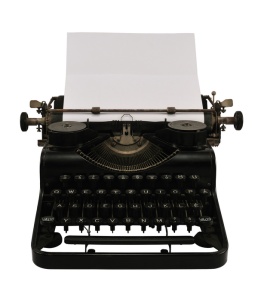 Six authors and 1 aspiring author/amazing graphic designer respond.
Six authors and 1 aspiring author/amazing graphic designer respond.
Fyn Alexander: I have a number of stories and characters floating around in my mind at any given time. They can come from a picture I saw in a magazine or something someone has said, perhaps a memory from my past. I usually start with the characters. I get an idea for character traits and names and then the rest flows from there. I have never written an outline in my life. Sometimes I work out my own fantasies in a story, like Jade Swift for instance, who was a complete brat, just as I always wanted to be but never had the nerve. I start writing as soon as I know how I want to begin and let the rest of the story develop from there. I thought I was really unprofessional until my editor told me that lots of writers work this way. Do whatever works for you.
Sedonia Guillone: I don’t have a process really of putting down my ideas. Once in a while I’ll jot down ideas and character sketches but I’m basically what is called a “pantster.” Once a story idea begins to germinate in my mind, I’ll let it marinate for a while and develop into a full blown story. Then I begin the process of writing the story out. Currently I’m in the middle of a WIP in which I didn’t go through this process and I’ve stalled out a bit. I’m waiting to see what comes to mind that will help me finish the story. 🙂
Jared Rackler: When it comes to designing book covers, I usually ask for a synopsis of the story from the author as well as important imagery such as a ring, tree or a castle. I then come up with a design based on that information, but my job’s not done there. I then have to weigh my design decisions against not only what the author wants but what the reader will find visually appealing as well current market trends. If the shelves are filled with books of random items in the same shades of red, black and white then designing the same cover could infinitely help or harm the sales of that novel. That may be what the reader is drawn to at the moment and the author or I may have to bite the bullet and give it to them. At the end of the day, the author or the publisher makes the final call. And it is my job as the artist to give them what they asked for, but something they don’t teach in school that you hopefully learn very quickly is to sneak a bit of what you know to be best wrapped in the design they asked.
PD Singer: I usually have a plot to start with, at least in rough outline, and then I start asking myself what sort of person would get involved in this plot. I try to have the characters mostly figured out before I start, because only by knowing them can I predict what they’ll do in each situation I drop them into. They still surprise me. If I pantsed, I’d never finish a thing; I wouldn’t know where I was going or how to get there.
DH Starr: I started with one strategy when I wrote my first books. I’d have a pretty good idea of who my characters are and what their story is before I start writing. In order to feel ready to embark on the personal journey of writing a story, I liked to think the entire storyline all the way through. I’d type chapter by chapter summaries, outlining many of the details, events, plots, and twists along the way. I found having the outline helped me to remain focused and calm. Of course, once I got started, my characters decided to take the stories in a different direction. Lately, when a story idea comes to me I have chosen to just sit and write and let the ideas flow. If the idea is right, it flows fast, if it doesn’t resonate, I drop it. This new process has helped me to become even more involved with my characters. I’m no longer guiding them but actually channeling them. It’s a rush!.
Ethan Stone: I’ve never been one to sit down and outline or plan things out. I usually know what happens in the beginning, at the end and a few things in the middle. As I write I figure out the best way to get from Point A to Point B to Point C and so on. I do, however, write in chronological order. I know one author who jumps back and forth all the time when she’s writing. My “fly-by-the-seat of my pants” thing works out for me because it lets my characters show me where they’re going. The times I have tried to outline I found the actual writing of the scene held no joy for me. I wasn’t discovering as I wrote and that is one thing that is very important to me.
Eden Winters: My books start with a single concept, and build over time, usually while I’m busy doing something else. My purse is usually full of random jottings that occurred to me at work, and I keep a notepad with me at all times. When I’m driving, I record my ideas on my cell phone, and have been known to pull into parking lots to make quick notes. I’m a fly by the seat of my pants writer, so even if I do try to outline, the end result always meanders off course. So far I’ve had two separate occasions where a single book split into two because I simply had too many ideas for one volume. After I begin typing, the characters and plot add their own voices. For every book that’s approximately 60,000, I normally write about 90,000 and then trim the excess, using the leftover as free reads or a short story.

Reblogged this on JARED RACKLER DESIGNS and commented:
I am extremely excited about this collaboration! Take look and ask your questions!
Our first post for M/M Author’s exposed. I can’t wait to engage in conversations with you.
Interesting post guys. I guess I wrote most like Fyn and Ethan. And NOT out of order. *shudder* I may skip a scene “insert sex here” “insert argument here” if I’m not feeling up to writing that particular type of scene but I always say how can I write the end if I don’t even know what the middle is. The whole thing could change.
I wrote an outline once. It was a really boring conference. I had all these different scenes and how it would play out and I got to about the second chapter and the characters did something that meant the first planned event would not work and after that it just continued to go down a different road so I gave up the outline and just went with it. It was an ensemble thing though so all of the character sketches I did were useful, all the names, physical and character traits came in handy when keeping track of everyone, but if I only have two or three characters, I don’t even need that.
A hundred ways to write a book, all of them correct. 🙂
Tam–Your issue with outlining was similar to what happened with me. Damn characters think they can do whatever they want to!
I’m just writing my current WIP without an outline and it’s an interesting experience.very different than other times I’ve written with an outline. I feel more connected to the characters and like I’m experiencing their lives rather than orchestrating them.
I guess that’s what it’s like for me. Most of the time I really have no idea what they will do except in the broadest of terms until my fingers type it. It’s kind of weird. If I have it too well planned in my head it becomes a chore to force the points from A to B.
I’ve had that happen. My protag decided he wanted to get back with old boyfriend instead of fall for his intended love interest. My beta solved the problem with the words, “So, kill off the old boyfriend.” My protag snapped right into line after that.
Wow, you are a cruel, cruel woman. LOL No mercy. 😉
Tam, Eden just has a cruel, cruel beta.
That is evil, but I’m glad it worked.
If I’d listened to Noah, he’d be standing in front of the Tub of Suds, arm around Willie while waving Jeremy off to college.
I love to hear from readers. I am happy to answer anythig you may want to know. Well, almost anything! This is going to be a great blog. Thanks to Doug for all his hard work.
Thanks to you too Fyn. You’re terrific!
Whoot! We have a blog! I’m so excited to be here. Hey, everybody!
Hey lady!
This is really interesting! It’s really neat to see how everyone does everything different and that there is really no wrong way to do it if it works for you. I have a tendency to have ideas pop in my head and they sound great but getting the ideas from my brain onto paper and having it still make sense after the transition is quite the challenge. Thank you to everyone who shared!
Thanks Jenny. I haven’t met anyone who said getting those wonderful stories out of their heads and onto the page was easy. But I’ve heard a ton of people speak about their characters and their stories with love, passion, and fierceness.
My problem is that my ideas have a time limit. I have an endless supply of works in progress because I didn’t act quickly enough, and my muse wandered on to a new story.
I write one book at a time. It’s the only thing I am strict about. I never start a new project until the last one is finished. I find I get confused too easily if I do. I may have another story in my head floating around but it doesn’t get on the page until it is its turn.
I’m like Fyn for the most part. I stick with one book at a time. Otherwise my characters become suspiciously similar to each other.